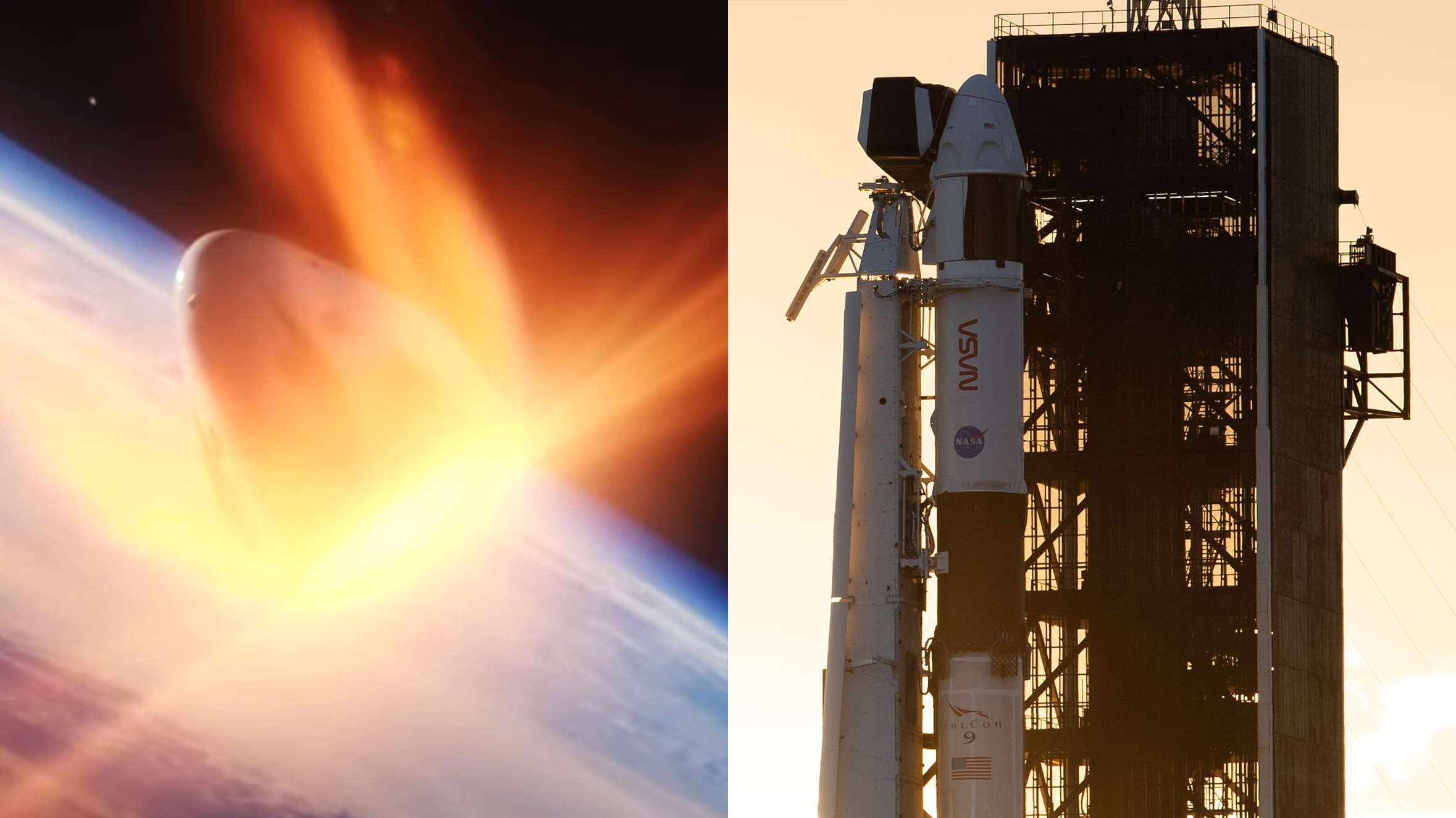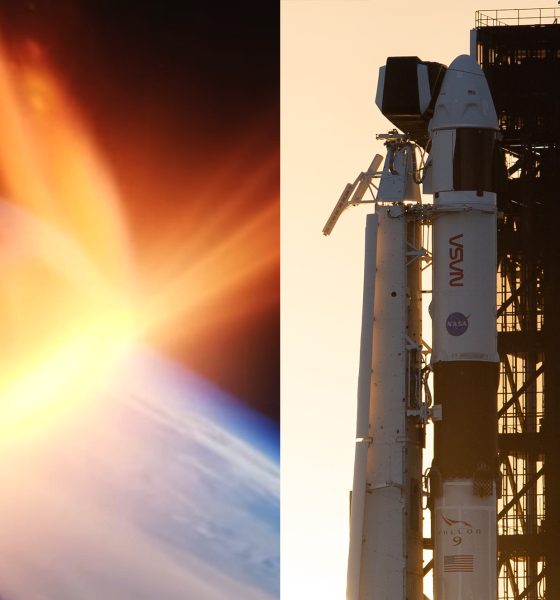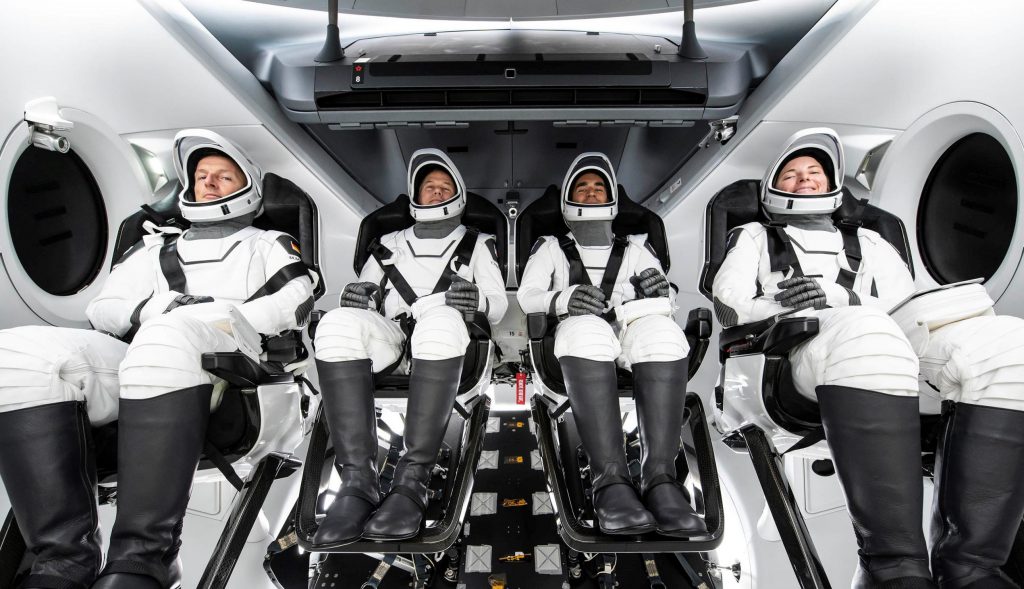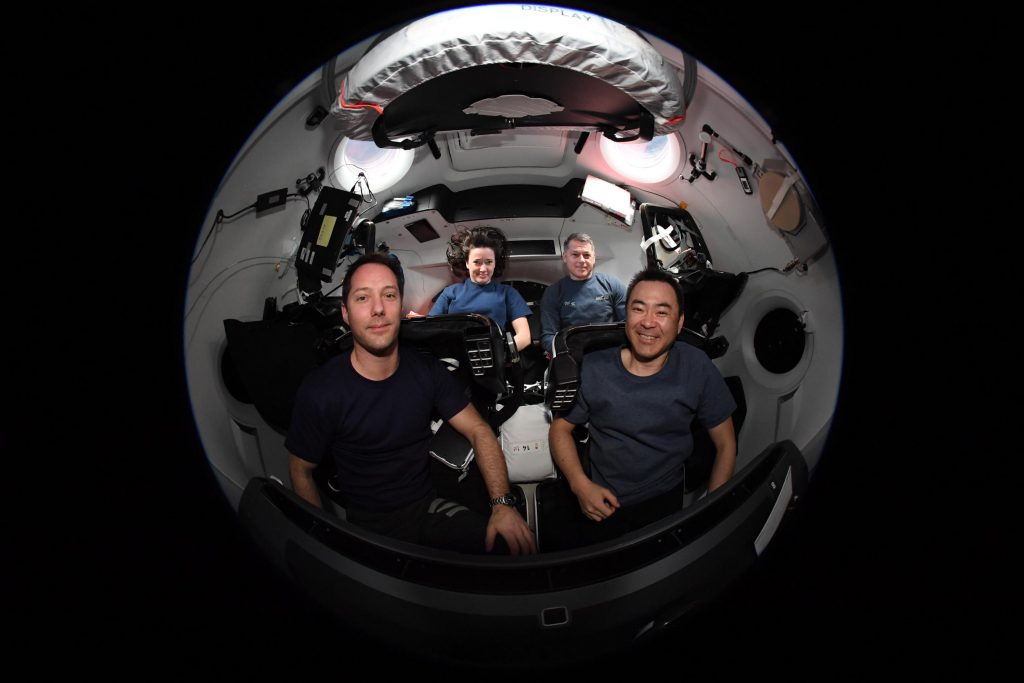

News
SpaceX, NASA schedule back-to-back astronaut recovery and launch after delays
Poor winter weather on Florida’s East Coast and across the Atlantic Ocean has forced NASA and SpaceX to flip the nominal sequence of events for the imminent back-to-back launch and recovery of two Crew Dragons.
Contrary to preference, SpaceX and NASA’s four Crew-2 astronauts are now scheduled to undock from the International Space Station (ISS) and return to Earth before their replacements (Crew-3) launch to the station. As a result, there will be no on-orbit handoff, meaning that only one NASA astronaut – Mark Vande Hei – will be left alongside cosmonauts Anton Shkaplerov and Pyotr Dubrov to crew and operate the US segment of the ISS until Crew-3’s arrival.
After several delays from an initial October 30th target, Crew-3 astronauts Raja Chari, Thomas Marshburn, Matthias Maurer, and Kayla Barron are scheduled to ride Falcon 9 and Crew Dragon to orbit no earlier than (NET) 9:03pm EST, Wednesday, November 10th (02:03 UTC 13 Nov) – two days after Crew-2 is expected to splash down.

Save for a one-day delay from October 30th to October 31st needed to give SpaceX and NASA time to qualify a fixed plumbing leak for crewed spaceflight, all subsequent delays into November have been caused by poor weather – a rather common late fall and winter occurrence in the Atlantic Ocean and southern US. The weather isn’t entirely to blame, though. Crew Dragon, SpaceX, and NASA are also partly responsible due to the extremely strict and narrow range of weather conditions the spacecraft has been certified to operate in.
Worse, a large portion of Dragon’s weather constraints are for hypothetical abort scenarios rather than the nominal launch – not “is it safe to launch?” but “is it safe to launch if something fails catastrophically and Dragon aborts and has to splash down anywhere in a several-dozen-mile corridor stretching the entire length of the Atlantic?” In the case of Crew-3’s launch, the main condition making that vast abort zone a no-go for launch is surface winds.
While aborting an expensive, time-sensitive rocket launch due to ground winds might bring to mind some kind of storm with vast swells and torrential rain, the reality is that NASA has only rated Crew Dragon to splash down when surface winds are less than 8-11 mph (13-18 km/h). In other words, the conditions causing 10+ days of delays and leading NASA to leave a skeleton crew at the space station’s US segment amounts to a firm breeze. There are likely many reasons (most hopefully good) for that highly conservative limit but ultimately, it means that NASA’s Crew Dragon missions will almost always be at risk of weather delays both going up and coming down.

As if to emphasize that fact, winds in the Gulf of Mexico, on the opposite side of Florida, also caused NASA to delay SpaceX’s Crew-2 departure and splashdown from November 6th/7th to November 8th, raising the risk of more Crew-3 delays or another complex schedule conflict if conditions force another change. A minor issue with Dragon’s toilet discovered during Inspiration4 and fixed on Crew-3’s ride to space will preclude its use during Crew-2’s 11-hour trip home, but that change should be barely noticeable to professional astronauts that are required to wear diapers as a precaution regardless. Otherwise, throughout the delays, Falcon 9 B1067, Crew-3 Dragon C210, and Crew-2 Dragon C206 have all thankfully remained healthy and ready to go.
Crew-2 is scheduled to undock from the ISS around 2pm EST (17:00 UTC) on November 8th and could splash down as early as 10:33 pm (03:33 UTC) – less than nine hours later.

News
Tesla is not sparing any expense in ensuring the Cybercab is safe
Images shared by the longtime watcher showed 16 Cybercab prototypes parked near Giga Texas’ dedicated crash test facility.

The Tesla Cybercab could very well be the safest taxi on the road when it is released and deployed for public use. This was, at least, hinted at by the intensive safety tests that Tesla seems to be putting the autonomous two-seater through at its Giga Texas crash test facility.
Intensive crash tests
As per recent images from longtime Giga Texas watcher and drone operator Joe Tegtmeyer, Tesla seems to be very busy crash testing Cybercab units. Images shared by the longtime watcher showed 16 Cybercab prototypes parked near Giga Texas’ dedicated crash test facility just before the holidays.
Tegtmeyer’s aerial photos showed the prototypes clustered outside the factory’s testing building. Some uncovered Cybercabs showed notable damage and one even had its airbags engaged. With Cybercab production expected to start in about 130 days, it appears that Tesla is very busy ensuring that its autonomous two-seater ends up becoming the safest taxi on public roads.
Prioritizing safety
With no human driver controls, the Cybercab demands exceptional active and passive safety systems to protect occupants in any scenario. Considering Tesla’s reputation, it is then understandable that the company seems to be sparing no expense in ensuring that the Cybercab is as safe as possible.
Tesla’s focus on safety was recently highlighted when the Cybertruck achieved a Top Safety Pick+ rating from the Insurance Institute for Highway Safety (IIHS). This was a notable victory for the Cybertruck as critics have long claimed that the vehicle will be one of, if not the, most unsafe truck on the road due to its appearance. The vehicle’s Top Safety Pick+ rating, if any, simply proved that Tesla never neglects to make its cars as safe as possible, and that definitely includes the Cybercab.
Elon Musk
Tesla’s Elon Musk gives timeframe for FSD’s release in UAE
Provided that Musk’s timeframe proves accurate, FSD would be able to start saturating the Middle East, starting with the UAE, next year.

Tesla CEO Elon Musk stated on Monday that Full Self-Driving (Supervised) could launch in the United Arab Emirates (UAE) as soon as January 2026.
Provided that Musk’s timeframe proves accurate, FSD would be able to start saturating the Middle East, starting with the UAE, next year.
Musk’s estimate
In a post on X, UAE-based political analyst Ahmed Sharif Al Amiri asked Musk when FSD would arrive in the country, quoting an earlier post where the CEO encouraged users to try out FSD for themselves. Musk responded directly to the analyst’s inquiry.
“Hopefully, next month,” Musk wrote. The exchange attracted a lot of attention, with numerous X users sharing their excitement at the idea of FSD being brought to a new country. FSD (Supervised), after all, would likely allow hands-off highway driving, urban navigation, and parking under driver oversight in traffic-heavy cities such as Dubai and Abu Dhabi.
Musk’s comments about FSD’s arrival in the UAE were posted following his visit to the Middle Eastern country. Over the weekend, images were shared online of Musk meeting with UAE Defense Minister, Deputy Prime Minister, and Dubai Crown Prince HH Sheikh Hamdan bin Mohammed. Musk also posted a supportive message about the country, posting “UAE rocks!” on X.
FSD recognition
FSD has been getting quite a lot of support from foreign media outlets. FSD (Supervised) earned high marks from Germany’s largest car magazine, Auto Bild, during a test in Berlin’s challenging urban environment. The demonstration highlighted the system’s ability to handle dense traffic, construction sites, pedestrian crossings, and narrow streets with smooth, confident decision-making.
Journalist Robin Hornig was particularly struck by FSD’s superior perception and tireless attention, stating: “Tesla FSD Supervised sees more than I do. It doesn’t get distracted and never gets tired. I like to think I’m a good driver, but I can’t match this system’s all-around vision. It’s at its best when both work together: my experience and the Tesla’s constant attention.” Only one intervention was needed when the system misread a route, showcasing its maturity while relying on vision-only sensors and over-the-air learning.
News
Tesla quietly flexes FSD’s reliability amid Waymo blackout in San Francisco
“Tesla Robotaxis were unaffected by the SF power outage,” Musk wrote in his post.

Tesla highlighted its Full Self-Driving (Supervised) system’s robustness this week by sharing dashcam footage of a vehicle in FSD navigating pitch-black San Francisco streets during the city’s widespread power outage.
While Waymo’s robotaxis stalled and caused traffic jams, Tesla’s vision-only approach kept operating seamlessly without remote intervention. Elon Musk amplified the clip, highlighting the contrast between the two systems.
Tesla FSD handles total darkness
The @Tesla_AI account posted a video from a Model Y operating on FSD during San Francisco’s blackout. As could be seen in the video, streetlights, traffic signals, and surrounding illumination were completely out, but the vehicle drove confidently and cautiously, just like a proficient human driver.
Musk reposted the clip, adding context to reports of Waymo vehicles struggling in the same conditions. “Tesla Robotaxis were unaffected by the SF power outage,” Musk wrote in his post.
Musk and the Tesla AI team’s posts highlight the idea that FSD operates a lot like any experienced human driver. Since the system does not rely on a variety of sensors and a complicated symphony of factors, vehicles could technically navigate challenging circumstances as they emerge. This definitely seemed to be the case in San Francisco.
Waymo’s blackout struggles
Waymo faced scrutiny after multiple self-driving Jaguar I-PACE taxis stopped functioning during the blackout, blocking lanes, causing traffic jams, and requiring manual retrieval. Videos shared during the power outage showed fleets of Waymo vehicles just stopping in the middle of the road, seemingly confused about what to do when the lights go out.
In a comment, Waymo stated that its vehicles treat nonfunctional signals as four-way stops, but “the sheer scale of the outage led to instances where vehicles remained stationary longer than usual to confirm the state of the affected intersections. This contributed to traffic friction during the height of the congestion.”
A company spokesperson also shared some thoughts about the incidents. “Yesterday’s power outage was a widespread event that caused gridlock across San Francisco, with non-functioning traffic signals and transit disruptions. While the failure of the utility infrastructure was significant, we are committed to ensuring our technology adjusts to traffic flow during such events,” the Waymo spokesperson stated, adding that it is “focused on rapidly integrating the lessons learned from this event, and are committed to earning and maintaining the trust of the communities we serve every day.”








